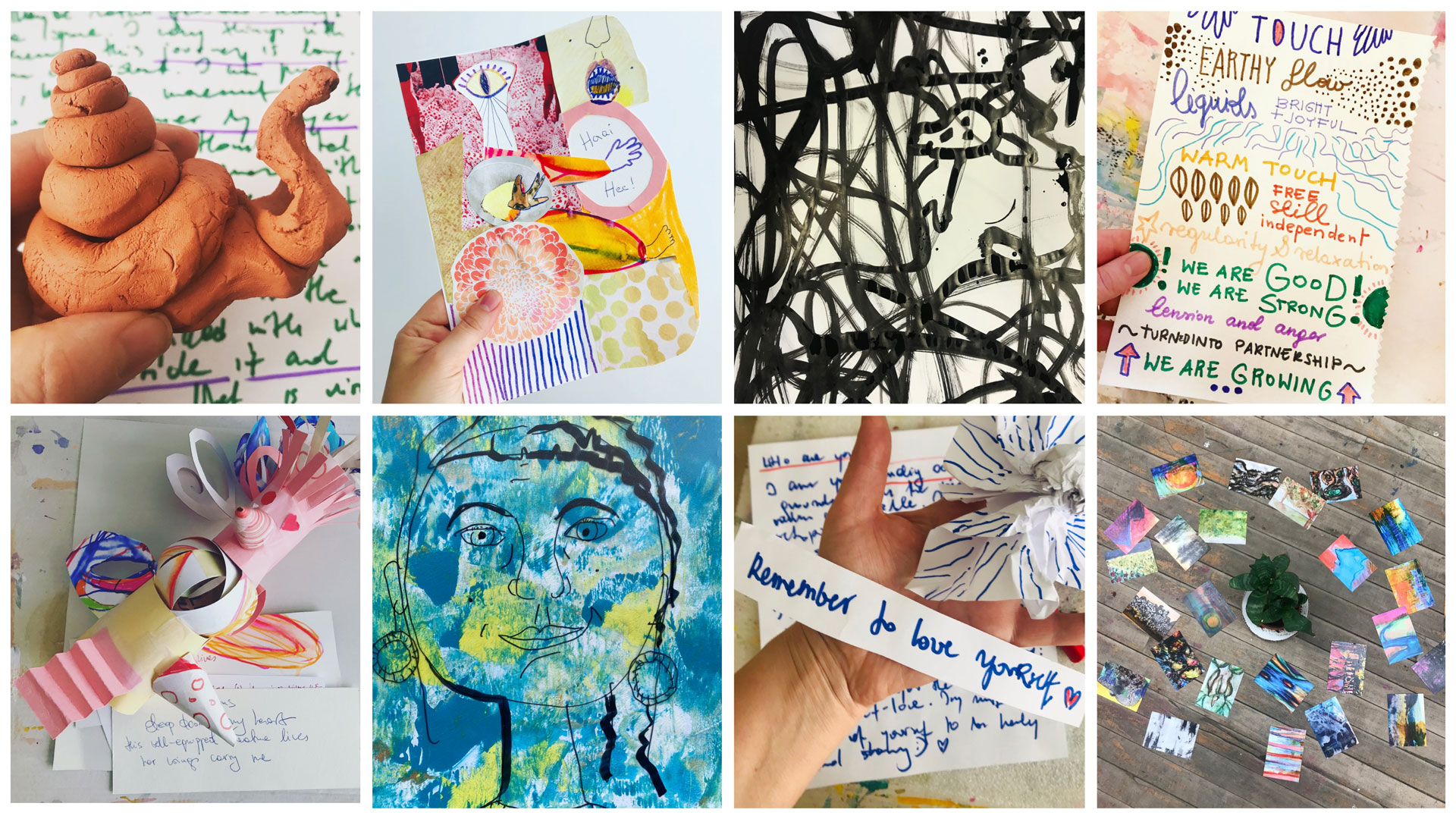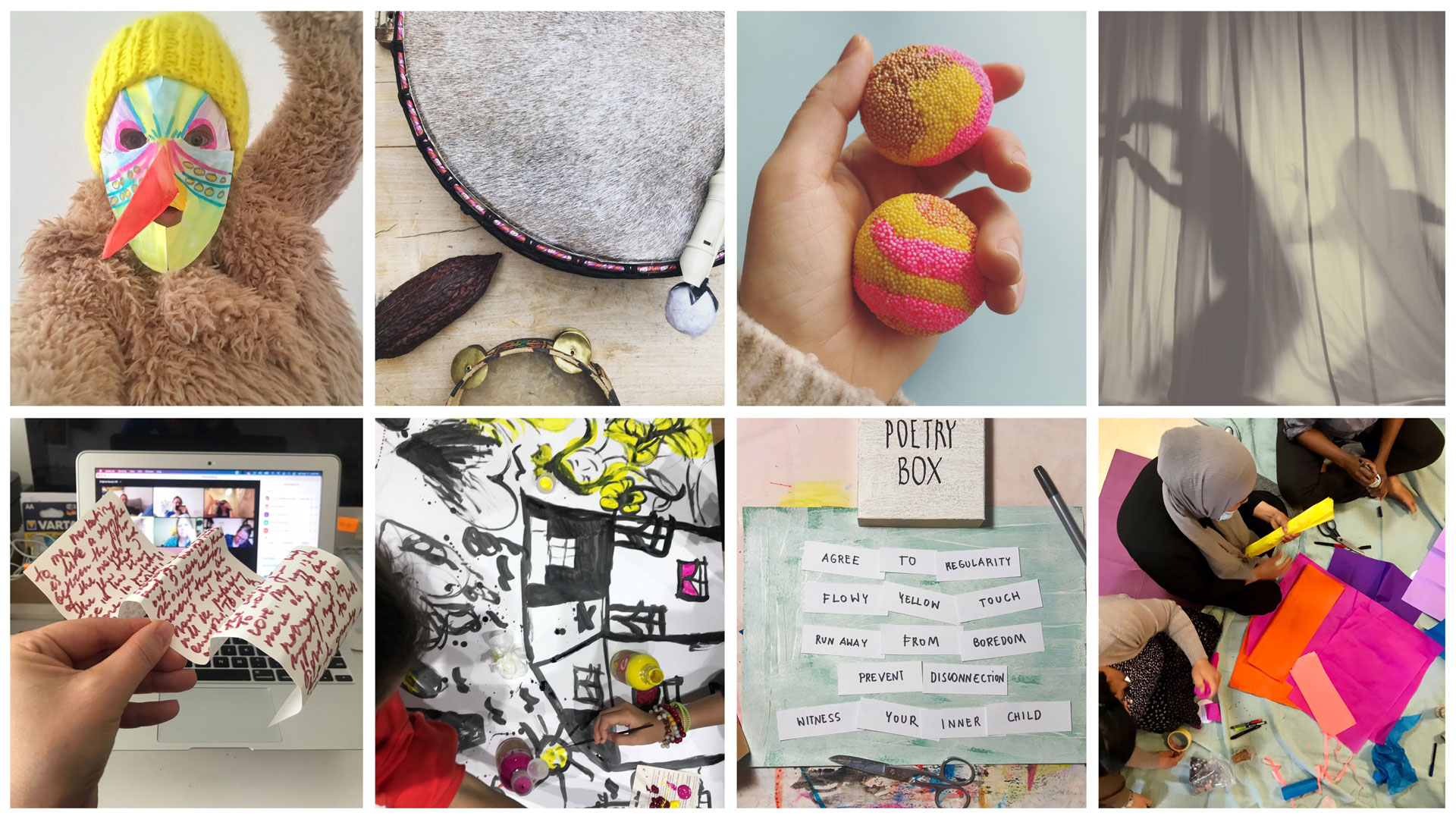WHAT IS ART THERAPY?

The World Health Organization (WHO) confirms that artistic expression plays an integral part in how we communicate, express emotions, build relationships, and recover from difficult life experiences. Arts offer us a unique opportunity to build resources, face the difficult, and integrate new knowledge about ourselves. This restorative power of the arts is one of the most important aspects of art therapy in general and expressive arts therapy, in particular.
Art therapy incorporates various means of expression that include visual arts, music, or performative arts. Generally speaking, it originates from the fields of art and psychotherapy. Contemporary art therapy methods often include all the different art forms and create an inviting space for restoration and healing. More importantly, every person can try art therapy, as we all have a natural capacity to imagine, play, and express.
Art therapists are trained professionals, who can present verified credentials on a minimum master's level.
Expressive arts therapy an art therapy method defined as an interdisciplinary practice combining psychotherapeutic approaches with our natural ability to express and play. In expressive arts therapy, different forms of expression (e.g. visual arts, movement, sound, storytelling, or even the practice of silence like meditation or prayer) come into play to stimulate imagination and allow people to connect with their needs, restore, and heal.
I often work with people who live abroad, those who have difficult migrational experiences or are still in search of a place of belonging in this world (e.g. clients going through a major transition). With 1000+ hours of therapeutic experience with people of diverse cultural, social, and professional backgrounds, I specialize in gentle trauma-informed and culturally-sensitive care. To my clients, I offer an inclusive, non-judgemental, and inviting space of belonging, in which they can relax, restore, and heal.
Each session is accustomed to the individual needs of my clients with respect to their background and personal preferences. That can include breathwork, restorative somatic practices, relaxation techniques, guided imagery, movement, play with rhythms and/or music, as well as visual arts.
During therapeutic sessions, I will support you through the creative process with my presence, art invitations, and nourishing feedback. Your openness and curiosity will be just enough to begin with!

• Increases self-knowledge and self-awareness
• Helps to set healthy boundaries and repair relationships
• Increases physical, mental, and emotional flexibility
• Decreases emotional discomfort, anxiety, and prevents burn-out
• Supports coping mechanisms and gradually builds resilience
• Helps to discover new resources and teaches healthy habits
• Promotes openness to new experiences
• Brings restoration, comfort, and inner calm
• Helps to deal with cultural shock
• Eases up the processes of acculturation and settling in a new place
If you are interested in how expressive arts therapy could support you on the way to more well-being, please check the section for clients or get in touch!